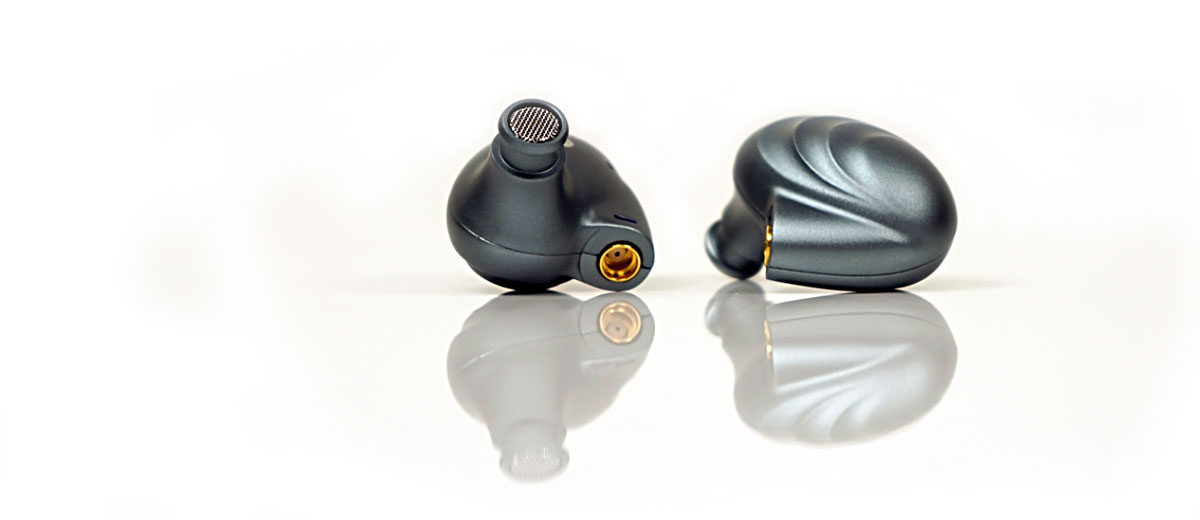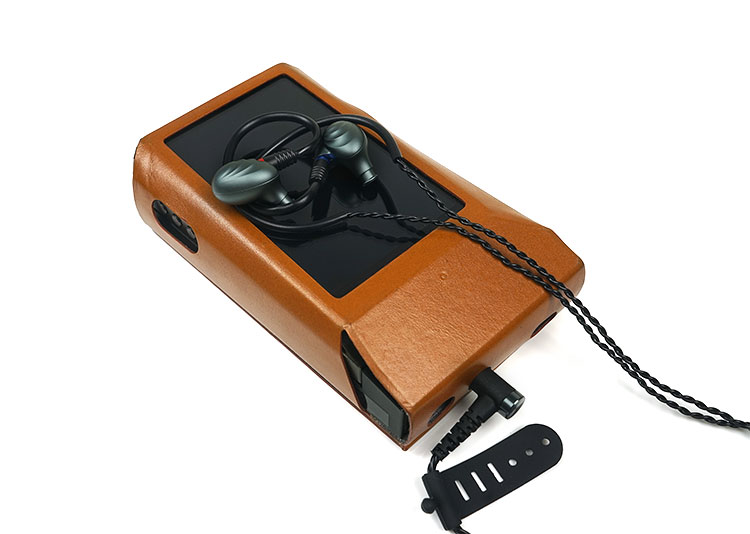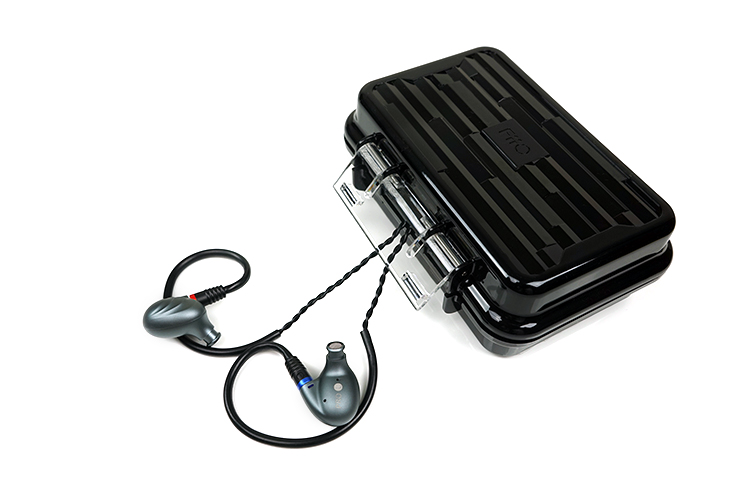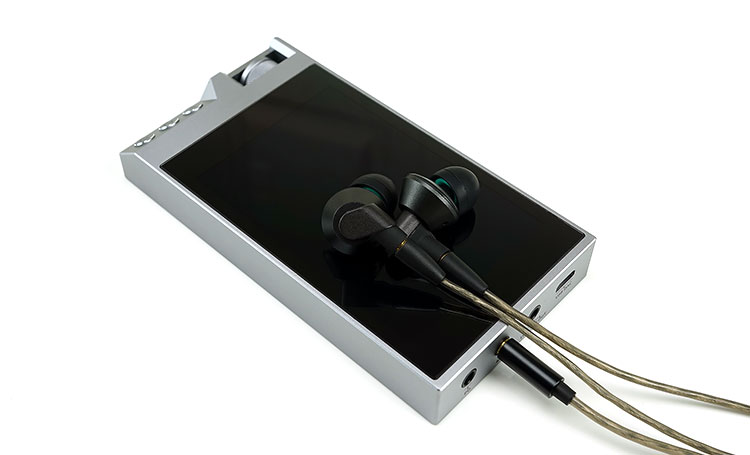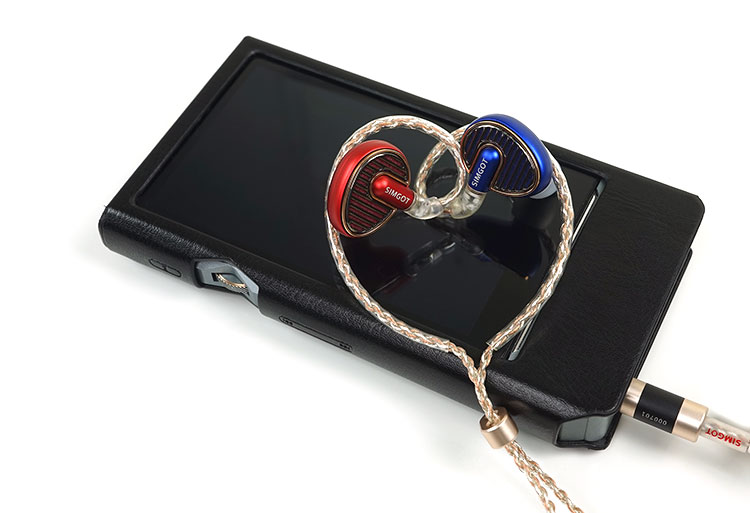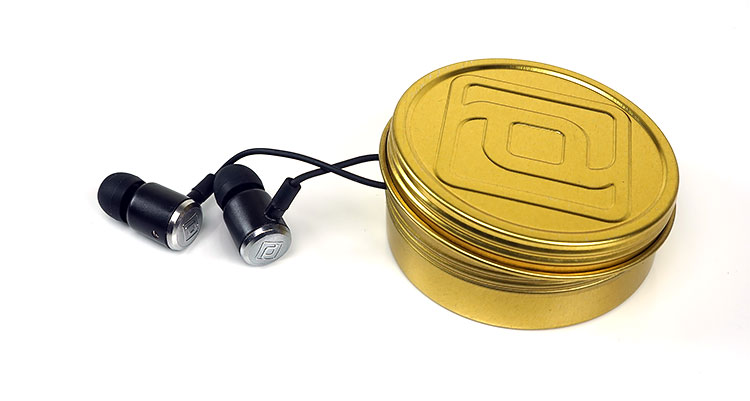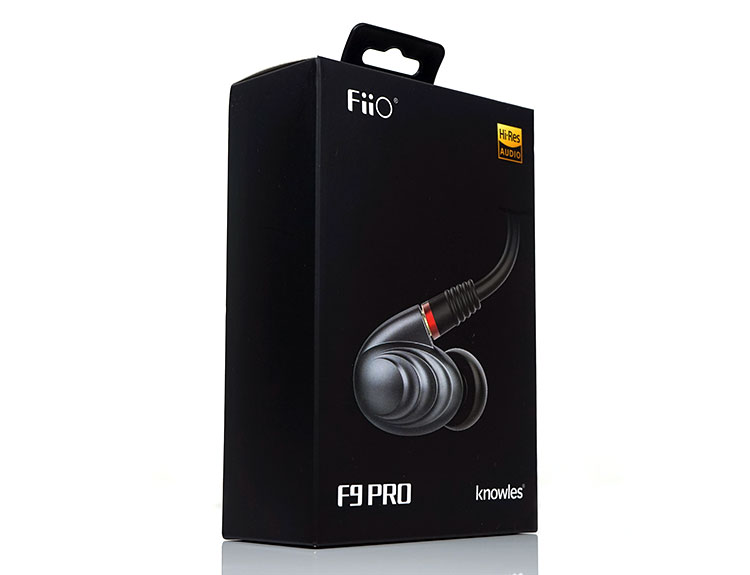Sound Impressions
Tonality & Presentation
How has the F9 Pro sound changed from the F9? If truth be told not a huge amount but the areas that have been tweaked will produce a more agreeable sound, particularly in its mids and treble response with the new Knowles drivers. This is a musical if politely elevated low-end with some warmth, a mildly dipped lower mids, more elevated mids/vocal presence and a forward treble presence.
There is still that little dip then fairly substantial jump from around 5-8k giving it a sparkling top-end. However, FiiO has moved the peak a little further up and beyond the 6-7k marker, possibly around 8k. This will add some additional energy in the final octave but it shouldn’t grate or sound harsh. They have also dropped the F9 peak by around 1-2dB which delivers a more coherent and balanced sound from the F9 Pro over the original F9.
You still get a similar emphasis compared to the F9 from 50-100Hz and a very slight sub-bass roll-off but it is not pushing down on the mids with that lower mid dip. Nor is it overly warming up instrumental timbre. As such, the F9 Pro presentation is a bit more balanced sounding than the F9, a touch more forgiving, and still delivering excellent resolution for this price point.
Staging on the F9 Pro is very similar to the F9 though it does articulate a little better in the final octave with more sparkle and there is a smidgen more sub-bass rumble. It doesn’t have a gut-wrenching sub-bass presence but does extend well. Left/right separation is naturally balanced with a dipped lower mids pushing instrumental positioning a little behind vocals which I tend to prefer.
Bass
There is about a 1-2dB increase in the sub-bass and the mid-bass response of the F9 Pro 9.2mm dynamic driver over the F9’s tuning of the same driver. From around 30-200mHz you will get a little more sub-bass rumble as well as fuller-sounding mid-bass.
Now, this tweak is more nuanced on generally mid-centric rock but throw in some harder hitting dark synth or RnB and you will hear the difference. With that, the F9 Pro does have marginally better depth than the F9 but it is not an “always-on” experience. I still term it as slightly on the polite side though more powerful sounding than before.
The F9 Pro post-mid-bass dip runs almost exactly the same as the F9 starting from around 100hz and taking a slow linear drop to the lower mids. As before, this is excellent for the prevention of bass bleed and lower-pitched instrumental clarity. I find instrumental timbre in this region to have the better body compared to the F9. The increased power, however marginal, from the sub-bass, does help in that regard.
Mids
I much prefer the midrange performance of the F9 Pro over the F9. FiiO has re-tuned the mids from 1-4k by pushing them forward a bit more than the F9 so they sound a little less recessed and balancing them out better with the lower treble presence. As a result, vocals sound clearer, with the better body and also come across as less muted.
That elevation also brings vocal positioning a little further forward, slightly more so than on the F9. As a result, instrumental positioning is more 3D-like and immersive and less diffuse and distant sounding. With the flatness from 2-4k gone from the original F9 you also get more upper mids energy and better percussive presence. The F9 had a slightly muted feel in the presence region, the F9 Pro does not. Instead, it tones things down from 4-6k which is exactly where you do not want excessive energy.
Treble
Much more coherent now with the dip at 4-6k easier on the ear and the peak around 8-9k slightly attenuated by 1-2db so it sounds less bright and aggressive. FiiO has also injected a little more final octave energy so there is a degree of enhanced sparkle but nothing overcooked. Whilst you can still get a little bit of a tizzy aftertaste on brighter recordings I do feel less of a need to EQ down that mid-treble response now compared to the F9.
As before you can change the tips for some fine-tuning with the wider bore tips bringing out a little more top-end air and the smaller bore and foam tips attenuating it a little more. My money is on the foam tips which I enjoyed more than the silicone. Yes, it darkens it a touch but that is just personal preference. YMMV.
Matchability
Efficiency
The F9 Pro has the same rating as the F9 at 28Ω and 106db sensitivity which I classify as medium efficiency for a modern IEM. That means you will get the same performance out of sources and amps as you will get on the F9. Volume matching is the exact same and your range of good matches for both IEMs remains the same. Volume is not an issue on smartphones and most reasonably powered DAPs such as the X3iii and the AM3a amp module for the X7 and Q5 units.
Noise
Noise performance on the F9 Pro is also the exact same which is a good thing as I highly rated the F9 for noise performance. The F9 Pro does not let me down on that score. The F9 PRO sounds completely quiet on DAPs such as the X3iii and amps such as the ALO Audio V5 as well as FiiO higher noise floor amp cards for the X7 such as the AM3. Clearly, it has been referenced against their own DAPs for noise performance which is no surprise.
Other DAPs such as the Cayin i5 is very quiet also and none of the sources mentioned require anything more than low-gain to get suitably loud enough. As before volume levels will be somewhat higher due to the 106dB rating, up to 15-20 steps higher than all-BA design but very similar levels to other hybrids such as the iBasso IT03.
Synergy & Scaling
As with the F9, the F9 Pro also responds reasonably well to better amping. You do not have to go overboard mind you, a smartphone will give you decent sound quality but it is not optimal for my tastes.
The F9 Pro’s differing tonal signature to the F9 also makes some sources and amps a better candidate for pairing than the F9. Candidates that I initially would not have paired with the F9.
Smartphones
The LG G6 smartphone, for instance, was a better pairing. Again, not the best for optimal dynamic range and getting that dynamic driver really moving. However, the brighter top end of the G6 was nowhere near as grating as the F9 pairing due to the smoother top-end tuning of the F9 Pro. There was also substantially less vocal sibilance and that generally brittle tone of the F9 pairing faded away with the more balanced F9 Pro pairing.
DAPs
It also sounds more natural using FiiO’s own X3iii. My initial perception was that this may have been a win for the F9 given the warmth of the X3iii and it does sound fine with the F9. When I reviewed the X3iii I did remark on how well both matched.
However, the F9 Pro’s better treble tuning and more prominent mids just make for a more compelling matchup with little in the way of bass bloom or veiled mids. The balanced output will also deliver a little more dynamic range and power which the F9 Pro can absorb easily using the supplied 2.5mm cable.
Stepping out of the FiiO ecosystem to entry-level DAPs such as the Cayin N3 and it was largely the same conclusion. The F9 plays well but can be a little peaky and harder sounding than the F9 Pro. The F9 Pro sounded more balanced and smoother sounding and at the same time, mids and vocal presence were just that bit better.
I have to recommend also the Shanling M3s, particularly using its balanced output. This was a pairing I didn’t like so much with the F9 due to the peaky 7k response making it a touch too bright. The F9 Pro sounds more precise, not terribly warm but far less distracting from 4k upwards. It also does a fine job at showing off the F9 Pro Knowles BA speed and clarity.
Balanced
Like the F9, the F9 Pro is designed to mesh well with their new Infinity Sound range of balanced gear such as the Q1 mark II or the AM3a. The balanced cable is the same SPC 4-core as the F9 so it does play slightly differently in terms of tonal bias compared to the OFC stock single-ended cable.
Power
Depending on the source there are some pros and cons. On the power level, both the X3iii and AM3a balanced outputs are good to excellent with the AM3a nudging it for me in terms of distortion and noise levels. Naturally, both will allow you to drop the volume dial a little bit more with an average of 10 digital steps on the AM3a. The Q1 Mark II will also sound better balanced using high gain and keeping bass boost off with the F9 Pro.
Noise
Balanced on the F9 Pro maybe make it more susceptible to higher noise floor hiss that naturally comes with some balanced outputs. However, much like the F9 none of the FiiO balanced sources displayed any significant hiss levels.
Select Comparisons
FiiO F5
$64.99
Technical
The F5 is slightly lower in terms of efficiency levels (32Ω and 102dB) but neither it or the F9 Pro required any real adjustment in volume on the X5iii in low gain to match with each other. Both are good with noise and pair well with FiiO’s own sources and amps, especially in balanced mode.
Sound
The F5 ‘s V-shaped response is now slightly different to the F9 Pro less V-shaped curve. The F9 Pro has an airier sound and is more articulate on the top-end compared to the F5. Vocals are also further forward, more open sounding with better instrumental presence. The F5’s single dynamic driver hits the proverbial ‘wall’ a little bit faster in terms of speed and clarity as well as lacking in the same level of detail of the F9’s low-end DD driver. The additional bass presence in the F9 Pro is also a welcome advantage over the F5.
Previously I felt some might prefer that more relaxed F5 treble signature but with the F9 Pro I believe that may not be such an issue so those thinking of upgrading from the F5 I would say go straight to the Pro. Granted the F9 Pro is an additional $40 over the F9 but I think the difference is worth it for the superior resolution and better top-end articulation.
SIMGOT EN700 PRO
$149
Technical
The single dynamic driver EN700 PRO is rated at 16Ω and 101dB compared to the F9 Pro’s 28Ω and 106dB rating. The EN700 PRO has a lighter load but still drives a smidgen easier than the F9 Pro by about 2-3dB volume matched on the DAPs such as the Shanling M3s. Noise on both is about the same, there are no issues with noise floors on DAPs such as the X3iii or the Cayin i5.
Performance
Tonally the EN700 Pro has a bit more sub-bass extension and presence and generally has about 1-2dB more elevation throughout until 1k giving it a slightly warmer and fuller sounding low-end. Instrumental timbre is also a bit warmer and thicker sounding with the F9 Pro preferring a cleaner, more neutral timbre and less note body.
Instrumental positioning and separation with that lower mid dip are a little better on the F9 Pro. The EN700 PRO additional lower-mid warmth combined with less mid to upper mid-elevation drops back the vocals to a more neutral position than the F9 Pro.
Treble on the F9 Pro is more forward sounding whereas the EN700 Pro takes a more relaxed approach. The EN700 Pro is more forgiving but has less air and headroom compared to the F9 Pro. Articulation and detail on the F9 Pro are a little bit better with the dual BA outpacing the single DD of the EN700 Pro particularly on the upper mids and treble.
Periodic Audio Mg
$99
Technical
The Mg is a single dynamic driver IEM rated at 32Ω and 101db. For the Mg, Periodic Audio use a high magnesium content alloy (96%) for the diaphragm material. The F9 Pro is more efficient at 28Ω and 106dB on paper but in real life testing the difference is negligible at times it felt the Mg was the more efficient given its more aggressive tonal response.
Noise on both is excellent with the Mg easily as silent as the F9 Pro on DAPs such as the X3ii, Shozy Alien Gold, and the ALO Audio V5.
Performance
Whilst the Mg timbre is relatively clean and clear the presentation is more u-shaped than anything with an elongated elevation in its low-end starting around 20Hz and starting to drop around 100Hz. You get great sub-bass presence and power though and it is certainly more aggressive and fuller sounding than the F9 Pro which in turn sounds the more reserved of the two.
With the Mg, you get a classic mid-bass injection of warmth and a full sound combined with a very natural level of decay typical of good quality dynamic drivers. That mid-bass to lower-mid-range drop also does a more than adequate job of keeping the upper bass and lower mids of the Mg relatively clean and clear. The Mg will sound the warmer of the two though for instrumental body and that better low-end delivery generates more power and authority in lower-pitched instrumental passages.
Instrumental clarity and separation on the F9 Pro are slightly better with the dual BA showing off a better turn of pace and greater articulation than the Mg. In turn, the Mg has this natural flow and has a smooth vocal presence that is equally as forward without getting too shouty.
Treble on the Mg has a 5-7k peak but it is not as bright sounding as the F9 peak and it does not sound as aggressive. It does lack a little body and presence compared to the F9 Pro which has a better balance from the upper mids to lower treble as well as more air and sparkle in the final octave. Overall, l I find the upper mids to treble performance of the F9 Pro to be that more articulate and detailed sounding than the Mg’s top-end.
Our Verdict
I am glad FiiO did not name this the F9 Mark II. There is enough of a difference to mark this one out as easily the better of the two both tonally and physically to justify the additional $40 price tag.
Performance-wise it inherits the good parts of the F9 in terms of noise control, relatively easy to drive and very well built. It also becomes a more coherent and smoother sounding IEM with a better midrange presence and a more balanced and less peaky top-end. Say hello to Knowles and feedback on that one. I still think the F9 peakiness is a little overstated but no doubt the F9 Pro is the right choice for those who may disagree with me.
The value is still excellent, perhaps even more so considering the physical changes. More premium BA drivers, double the amount of tips, additional left-right coloring and a soft zip pouch for enhanced pocketability.
My only worry? The F9 is still there, still at $99 and is perhaps the biggest competitor to the F9 Pro. We may have avoided bang for buck angst with the decision to go Pro instead of MK2 but I do wonder which one will be the winner in the long term.
F9 Pro Specifications
- Type 1 dynamic and 2 balanced armature drivers (Knowles TWFK-30017-000)
- Frequency response 15Hz ~ 40kHz
- Sensitivity 106 dB/mW
- Impedance 28 Ω
- Cord length of 1.2 m
- Weight About 3.76 g/per unit
- Color Titanium(with “PRO” mark on the Y-splitter and the earbuds)
- Detachable cable design Yes (standard MMCX connector)
- Cable Comes standard with 2 cables
- The 3.5mm single-ended cable: Black, with in-line controls, TPE material for the exterior and tin-plated copper for the core;
- The 2.5mm balanced cable: Black, four carefully-woven core, 5N purity oxygen-free copper (OFC) wires
Plug
- Both the 3.5mm single-ended cable and the 2.5mm balanced cable are with L-shaped plug; with red & blue metal rings on the MMCX connectors

